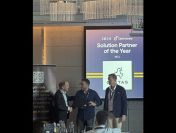Understanding the new consumer is a subject that brands are putting a premium on. The new ways of the Millennials, the role of technology in connecting, the rise of new powers and new subjects that consumers are becoming conscious about are only some of the factors that brands hope to decode in their attempt of staying relevant to consumers. From cultural (and sub-cultural) nuances to beauty innovation to subjects like bacteria chic to womenomic luxury, JWT has put together 100 trends that it believes will shape 2015.
‘The Future 100’, a report from JWTIntelligence, features original analysis and insights on key trends and cultural shifts to watch in the year ahead. The Future 100 looks to connect the dots between the ‘what’ and the ‘why’, spanning categories like culture, beauty, brands, food and drink, innovation, lifestyle, luxury, retail, sustainability and technology.
The report spotlights the rise of the Mipsters (Muslim + Hipsters), a phenomenon that is taking effect globally. It also talks of how the axis of influence is changing in the beauty world as the global appetite for South Korean products grows. The report features the rise of 1-for-1, or Third Way Commerce, where while charity and profitability have been viewed as mutually exclusive, a ‘third way’ of business models combines social good with sales and marketing, a popular approach with ethically minded Millennials.
Amongst all the trends spotted, it is interesting to note how brands are being presented new opportunities to make their connect with consumers. The ‘Do Brands’ trend implies that rather than focus their efforts on self-serving content, brands are increasingly using innovation and social initiatives with genuine merit to tell their stories, and allowing social media to do the rest. At the same time, the ‘Me Brand’ wave suggests that consumers, particularly Millennials, are increasingly starting to think of themselves as brands, curating their online image and monetizing it through social media clout, micro-retail platforms and YouTube. They’re also using new platforms to become micro-entrepreneurs. This is a way for brands to connect with this spirit and empower it.
The travel section of the report takes a look at Dubai resurgence. The report notes that Dubai is already established as a luxury shopping hub, and now it’s gaining an avant-garde edge, courtesy the new Dubai Design District. The District covers up to 25 million square feet and features a design school, concept stores, boutique hotels, showrooms and residences. “People are hungry to know more about our culture, about Dubai. The project is to nurture local talent and hopefully have the next global brand come out of Dubai. This city is full of secret talents,” Amina Al Rustamani, Group Chief Executive Officer of Tecom Investments, which is spearheading the project, said in a report.
Dubai is now a top-ranked destination for tourists and according to Bain & Co the city represents 30 per cent of the Middle Eastern luxury market. Next stop: a new wave of luxury hotels. Rosewood, St. Regis, W Hotel, a Palazzo Versace and The Langham are all slated to open in 2015.Dubai is becoming a mature luxury market and, as such, switching from bling to art and cultural projects.
“The fast-paced digital world, instantly accessible information, globalization and social media have accelerated the pace of trends exponentially. Meanwhile, the speed of innovation is requiring brands to take both, a short-term and a long-term view, planning strategies not just for the next year but the next 20 years,” said Worldwide Director of JWTIntelligence, Lucie Greene.
The rise of womenomic luxury, new feminism, a digital high culture, connected kids are some of the other aspects of interest in the report.





